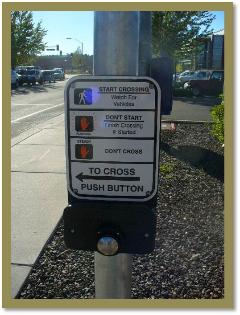


NAU Traffic Signal Alternatives

Final Recommendations
The analysis of the counts that were conducted by IDD Engineering consisted of using Hi-CAP,
Synchro, and Vissim software packages, as well as hand calculations from the HCM to validate
that the software outputs were accurate. The software packages are not often used for
pedestrians being the main priority, so several adjustments had to be accounted for to allow
for the optimization of pedestrian flow.
During the analysis stage of the project, a few alternatives were established. These consisted
of offset timing, simultaneous timing, and leave as is design. The best design for the
University corridor would be one that gave the least amount of green time to the vehicles
during academic session, and the opposite for times during the academic breaks. For the
completion of the project, three unique timing plans were needed; present timing plan, 5 years
in the future plan, and during academic breaks timing plan. The first two timing plans
were determined to be identical because the vehicle counts will continue to drop
overtime based upon a growth study, so both the present and future require
timing plans consisting of the shortest splits possible. The academic break timing plan was
different because it has a focus on vehicles rather than pedestrians. Due to this situation, an
offset of 16 seconds and the use of pedestrian buttons is recommended at University and
Knoles intersection.
Synchro, and Vissim software packages, as well as hand calculations from the HCM to validate
that the software outputs were accurate. The software packages are not often used for
pedestrians being the main priority, so several adjustments had to be accounted for to allow
for the optimization of pedestrian flow.
During the analysis stage of the project, a few alternatives were established. These consisted
of offset timing, simultaneous timing, and leave as is design. The best design for the
University corridor would be one that gave the least amount of green time to the vehicles
during academic session, and the opposite for times during the academic breaks. For the
completion of the project, three unique timing plans were needed; present timing plan, 5 years
in the future plan, and during academic breaks timing plan. The first two timing plans
were determined to be identical because the vehicle counts will continue to drop
overtime based upon a growth study, so both the present and future require
timing plans consisting of the shortest splits possible. The academic break timing plan was
different because it has a focus on vehicles rather than pedestrians. Due to this situation, an
offset of 16 seconds and the use of pedestrian buttons is recommended at University and
Knoles intersection.


Copyright Northern Arizona University, IDD Engineering
Last Modified: 4/28/11